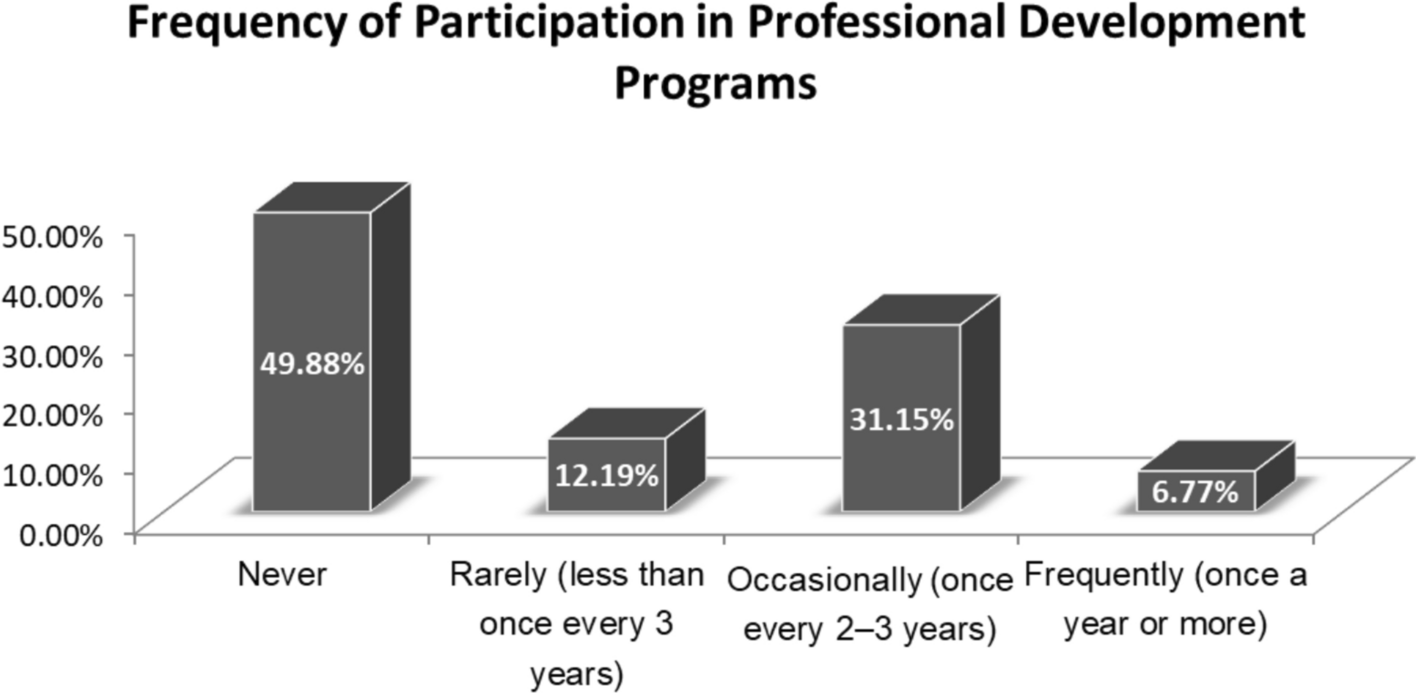Examining Saudi teachers’ professional competency and attitudes toward technology-integrated teaching for students with intellectual disabilities
Published in Education
When Saudi Arabia launched Vision 2030, education suddenly felt different. The national conversation shifted to digital transformation and inclusive schooling at the same time. As a special education researcher working in this context, I always wondered about a simple but uncomfortable question:
“We’ve invested in devices and platforms, but are our teachers actually ready to use them with students who have intellectual disabilities?”
This paper grew out of that question.
From policy promises to classroom realities
Saudi special education has grown rapidly, with new schools, programs, and policies defining the rights, services, and classifications for students with intellectual disabilities. Yet, in practice, very concrete obstacles keep appearing: teachers may have tablets but little meaningful training, assistive software is available but often feels too complex to use confidently, and many are understandably anxious about having to troubleshoot technical problems in the middle of a lesson.
At the same time, the research I could find from Saudi Arabia was mostly small-scale and local important but limited to single districts or institutions.
What was missing was a national, multi-region snapshot of special education teachers’ readiness to integrate technology specifically for students with intellectual disabilities, one of the most marginalized learner groups.
Building a study that captured “readiness”
I knew from international literature that “readiness” is more than just knowing how to click or swipe. It lives at the intersection of:
- Pedagogical–technological competence (TPACK)
- Attitudes and intentions (Theory of Planned Behavior)
- Confidence (self-efficacy)
- Context and adoption climate (Diffusion of Innovations)
So instead of simply asking, “Do you use technology in your class?”, I designed a questionnaire that tried to honor all of these dimensions:
- items on integrating tools into actual lessons rather than just operating devices
- items on attitudes, perceived expectations, and ease or difficulty
- items on confidence in troubleshooting and adapting tools
- items on access to trials, peer examples, and institutional support
Developing and validating this instrument piloting it, refining wording, and running factor analyses was one of the most time-consuming parts of the project, but also one of the most satisfying. It forced me to be explicit about what we really mean when we say “competent with technology.”
Reaching teachers across a vast country
Saudi Arabia is geographically huge, and special education teachers are scattered across regions and school types. Using an online survey and cluster sampling, I ultimately gathered responses from 443 teachers working directly with students with intellectual disabilities.
Seeing the dataset for the first time was a genuine “high” in this project: it felt like the beginning of a truly national conversation, not just a local snapshot.
The findings that surprised me
Some results fit what I expected; others were sobering.
- Competency: On average, teachers rated their professional competency in technology-integrated teaching as moderate (mean 3.83 out of 5). They felt relatively confident about using and adapting tools, but less confident in troubleshooting technical problems, which emerged as a clear weak spot. (Table 1, page 9)
- Attitudes: Teachers’ attitudes were very positive (mean 4.21 out of 5). They strongly agreed that technology can improve learning outcomes and that they are open to new tools. (Table 2, page 11)
- Professional development: This was the most striking and worrying finding. Nearly half of the teachers (49.88%) had never participated in any professional development focused on technology integration for students with intellectual disabilities. The bar chart on page 10 makes this gap painfully clear.
Yet, among those who did attend PD, most rated it as effective or very effective (Figure 2, page 11), suggesting that when teachers are given good training, they feel the difference.
- Who feels most ready? Younger teachers and those in the 11–15-year experience range showed higher competency scores, while gender differences were negligible.
In short: teachers want to use technology, largely believe in it, and feel moderately capable but the system has not consistently invested in giving them sustained, targeted support.
The low points: limitations and self-critique
A Behind the Paper piece should also acknowledge the doubts.
For me, two issues were particularly challenging:
- Self-report data. I knew from the start that asking teachers to rate their own competence has limitations. Social desirability, differing internal standards, and lack of observational data all matter. The paper is very explicit about these limitations and calls for future studies to include classroom observations and performance measures.
- Cross-sectional design. The theoretical framework suggests pathways how professional development might shape self-efficacy, which then shapes competence and intention. But with cross-sectional data, we have to be careful not to over-claim causality. Some of the most interesting relationships in the data are, for now, hypothesis-generating, not definitive proof.
Being honest about these limitations in the discussion was not easy, but it was necessary. Good theory deserves cautious interpretation, not over-confident storytelling.
What this study changed for me
Working through the data, I found my own thinking shifting in three ways:
- I stopped assuming that “more technology” automatically means “better outcomes.” The real bottleneck is professional learning, not just devices.
- I began to see age and experience patterns not as simple “digital native vs. non-native” stories, but as clues about where mentoring and peer coaching could be most powerful.
- I became more convinced that special education needs its own evidence base on technology integration, not just borrowed insights from general education.
What’s next?
This study is a descriptive starting point. The next steps I hope to see some of which I plan to pursue include:
- designing practice-based PD models that combine workshops, peer coaching, and follow-up support
- testing these models in longitudinal designs to see whether teacher competence and classroom practice truly change over time
- examining which specific tools (from low-tech aids to advanced apps) are most useful for students with different profiles of intellectual disability
Ultimately, the goal is simple: when a student with intellectual disabilities walks into a classroom in any region of Saudi Arabia, the technology around them should not be decorative it should be used confidently, thoughtfully, and routinely to support their learning.
Follow the Topic
-
Discover Education

An international, peer-reviewed open access journal that publishes original work in all areas of education, serving the community as a broad-scope journal for academic trends and future developments in the field.
Related Collections
With Collections, you can get published faster and increase your visibility.
AI-Driven Innovations: Bridging Educational Transformation and Workforce Development in the Age of Talent Management
This Topical Collection explores the intersection of Artificial Intelligence (AI) and education, focusing on how AI-driven technologies are reshaping both academic environments and human resource (HR) practices. With rapid advancements in AI, educational institutions and organizations are finding new ways to enhance learning experiences, personalize student engagement, and foster skills critical to the future workforce. As AI continues to disrupt traditional models, this collection invites scholars to examine the opportunities and challenges that arise when AI-driven tools are applied in education and HR.
Key areas of focus include the use of AI for personalized learning, predictive analytics in student performance, AI's role in talent acquisition and development, and how AI is reshaping leadership and management strategies. This collection aims to bring together research that bridges education and HR to explore innovative approaches to workforce readiness, lifelong learning, and human capital development in an AI-driven world.
Contributors are encouraged to submit work that addresses AI’s potential to transform both educational and organizational landscapes, ultimately shaping the future of work and learning.
Keywords: Artificial Intelligence; Education; Human Resource Management; Talent Development; Personalized Learning; Predictive Analytics; Workforce Development; Leadership; Organizational Innovation
Publishing Model: Open Access
Deadline: Dec 31, 2025
Innovative Curriculum and Psychological Well-Being in Education: Bridging Pedagogy, Leadership, and Technology
This Collection explores the intersection of curriculum development, mental health, educational leadership, and technology in shaping future-ready education systems. It welcomes interdisciplinary research that examines how innovative curriculum designs, critical pedagogy, and psychological well-being influence student learning, teacher effectiveness, and institutional success. Contributions may include empirical studies, theoretical perspectives, and methodological advancements in areas such as digital learning, mental health in education, leadership in educational settings, and transformative pedagogies. Special attention is given to research that aligns with the Sustainable Development Goals (SDGs), particularly in promoting inclusive, equitable, and quality education for all.
This Collection supports and amplifies research related to SDG 4
Keywords: Access to Education; Curriculum development; Educational Psychology; Mental Health in Education; Critical Pedagogy
Publishing Model: Open Access
Deadline: Jan 14, 2026





Please sign in or register for FREE
If you are a registered user on Research Communities by Springer Nature, please sign in